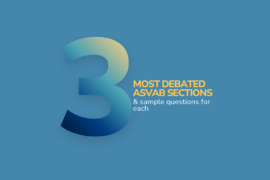For many students, the reason for postponing college comes down to one very simple fact — they just can’t afford it. With no scholarships or grants, and not enough cash in the bank to cover what financial aid doesn’t, college may seem to be a distant dream.
However, you do have options. The military offers you the opportunity to learn valuable job skills and to make money, and as a service veteran, you may be able to get some help with that college education after all.
What scholarships and aid are available?
Start Your College Search Now.
Make sure you sign up for a free account, and get started finding your dream college!
As part of its efforts to recruit and retain new enlistees, the Veterans’ Administration (VA) offers education benefits to veterans of all branches of military service. Depending on what role you serve and how long you stay, the government will provide significant financial aid after your discharge.
This is the government’s thank you for your service, as well as their investment in your future and to your continued positive contribution to your country as a civilian.
Montgomery GI Bill-Active Duty (MGIB-AD)
The best-known source of military financial aid is the Montgomery GI Bill-Active Duty, or GI Bill for short. You could be eligible for up to three years of benefits for college, technical, or vocational school; correspondence courses; job training; or even flight training. You do have to meet some basic criteria, such as having received an Honorable Discharge. You also need to have your high school diploma or GED certificate (or in some cases, 12 hours of college credit).
There are four categories of GI Bill benefits, and you must meet additional criteria to be eligible. The specific criteria for each category are a bit more complex — you may want to check out further details on them at the VA web site at www.gibill.va.gov. The amount of aid you’ll qualify for will ultimately be based on the type of training you received, your length of service, your category, and any other educational benefits or college scholarships you may have received while in the service.
Veterans Educational Assistance Program (VEAP)
VEAP is different from the GI Bill because it includes education contributions that you make from your military pay towards your future education. If you first entered active duty between January 1, 1977 and June 30, 1985 and you chose to make contributions under this program, then they are matched on a $2 for $1 basis by the government. There are a few other specific eligibility requirements that you may want to check out at www.gibill.va.gov.
You can use this money for college (degree and certificate programs), flight training, apprenticeship/on-the-job training, and correspondence courses. If you take remedial, deficiency, or refresher courses, they may be approved under certain circumstances as well.
Montgomery GI Bill-Selected Reserve (MGIB-SR)
Even if you weren’t full-time Active Duty, you may be eligible for GI Bill benefits and military financial aid as a member of the Selected Reserve. This includes the Army Reserve, Navy Reserve, Air Force Reserve, Marine Corps Reserve, and Coast Guard Reserve, as well as the Army National Guard and the Air National Guard.
Depending on your status, you may be able to get up to three years of benefits. Eligibility depends on which Reserve duties you’ve performed, but you must have made at least a six-year obligation, signed after June 30, 1985. (If you’re an officer, you must have agreed to serve six years in addition to your original obligation.)
In addition to having made a six-year commitment, you must complete your initial active duty for training (IADT) and have received your high school diploma or equivalency before completing it. Unlike the MGIB-AD, 12 hours toward a college degree won’t meet this requirement. Last but not least, you must be in good standing with your active Selected Reserve unit.
Reserve Educational Assistance Program (REAP)
REAP is a benefit providing educational assistance for various Reserve troops who are called or ordered to active service in response to a war or national emergency. Depending on your circumstances, you may be eligible for education benefits or scholarships for college or for an increase in your current benefits. The Department of Defense (DOD) and the Department of Homeland Security (DHS) determine eligibility as appropriate.
Generally, you are eligible for REAP if you are a member of a Reserve component who served on active duty on or after September 11, 2001 for at least 90 consecutive days under a contingency operation. You may be able to get up to three years of benefits.
Testing reimbursement
If the cost of just getting accepted to college is daunting, reimbursement for most college admission and course credit testing is available. Registration and administration fees may be reimbursed, as well as any fees you pay for specialized testing.
Additional test-related costs outside of the actual tests themselves however, are not eligible for reimbursement. (This includes test-prep and practice test materials.) Currently, this program is only available for MGIB-AD and VEAP. Tests currently approved for reimbursement include:
- SAT (Scholastic Assessment Test)
- LSAT (Law School Admission Test)
- GRE (Graduate Record Exam)
- GMAT (Graduate Management Admission Test)
- AP (Advanced Placement Exam)
- CLEP (College-Level Examination Program)
- ACT (American College Testing Program)
- DAT (Dental Admissions Test)
- MAT (Miller Analogies Test)
- MCAT (Medical College Admissions Test)
- OAT (Optometry Admissions Testing)
- PCAT (Pharmacy College Admissions Test)
- TOEFL (Test of English as a Foreign Language)
- DSST (DANTES Subject Standardized Tests)
- ECE (Excelsior College Examinations)
More information about money for college
For more detailed information, check out www.gibill.va.gov. As a military veteran, you may be eligible for benefits under more than one program and according to the VA, you can receive up to 48 months of benefits under any combination of these programs. Make sure you check them all out!



